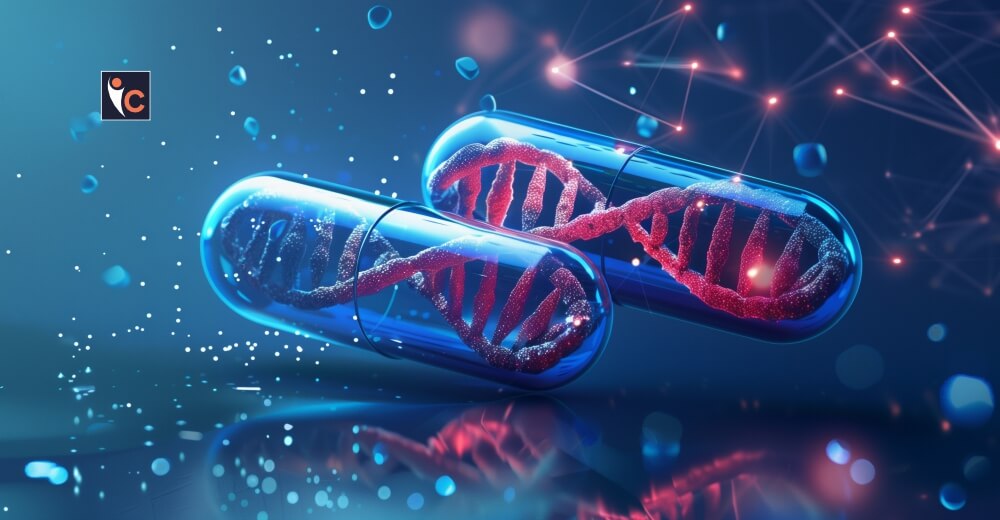Nanotechnology in Medicine
Nanotechnology has emerged as a groundbreaking approach in the field of cancer treatment, offering precision medicine that could revolutionize the way cancers are detected, diagnosed, and treated. By manipulating materials on a molecular scale (typically less than 100 nanometers), nanotechnology allows for the creation of nanoparticles and nanoscale devices that can interact directly with cancer cells, enhancing both the efficacy and safety of cancer therapies.
Targeted Drug Delivery
One of the most promising applications of nanotechnology in cancer treatment is targeted drug delivery. Traditional chemotherapy drugs often affect both cancerous and healthy cells, leading to severe side effects. Nanoparticles, however, can be engineered to specifically target cancer cells while sparing healthy tissue. This precision reduces side effects and improves the therapeutic index of anticancer drugs.
For example, liposomes—spherical vesicles made of lipid bilayers—can encapsulate chemotherapy drugs and deliver them directly to tumor sites. Once at the tumor, the nanoparticles release the drug in a controlled manner, reducing the toxicity to healthy cells. Doxil, a liposomal formulation of the chemotherapy drug doxorubicin, is already in use to treat ovarian cancer and Kaposi’s sarcoma, highlighting the clinical success of this technology.
Another approach involves gold nanoparticles, which can be conjugated with antibodies that specifically recognize cancer cell markers. Once the gold nanoparticles bind to the cancer cells, they can be activated by infrared light to heat up and destroy the tumor cells through hyperthermia.
Nanoparticles for Early Detection and Diagnosis
Early detection of cancer is critical for improving patient outcomes. Nanotechnology offers new diagnostic tools that are more sensitive and accurate than traditional methods. Quantum dots and iron oxide nanoparticles are two types of nanoparticles used for cancer imaging.
Quantum dots are tiny semiconductor particles that fluoresce when exposed to light. By attaching these dots to cancer-specific antibodies, they can be used to detect cancer cells at a much earlier stage than conventional imaging techniques like MRI or CT scans. This heightened sensitivity helps in early diagnosis and monitoring the progression of the disease.
Similarly, iron oxide nanoparticles have been used as contrast agents for magnetic resonance imaging (MRI). These nanoparticles improve the contrast of images, allowing for better visualization of tumors and their boundaries. The enhanced imaging capabilities of nanotechnology can lead to earlier intervention and more personalized treatment plans.
Nanotechnology in Immunotherapy
Nanotechnology is also being explored as a means to improve cancer immunotherapy, which harnesses the body’s immune system to fight cancer. Nanoparticles can be used to deliver immune-stimulating agents directly to the tumor microenvironment, boosting the body’s natural defense mechanisms against cancer.
For instance, polymeric nanoparticles can be loaded with antigens that activate immune cells such as T-cells. These nanoparticles are designed to release the antigens slowly, providing a sustained immune response against cancer cells. Additionally, nanocarriers can help reduce the immunosuppressive environment often found in tumors, making immunotherapies more effective.
Overcoming Drug Resistance
Cancer cells can develop resistance to chemotherapy and other treatments, which is a major challenge in oncology. Nanotechnology offers a solution by enabling multimodal therapy, where nanoparticles can be loaded with a combination of drugs or therapeutic agents to attack cancer cells in multiple ways.
For example, multifunctional nanoparticles can carry both chemotherapy drugs and RNA interference (RNAi) molecules that silence genes involved in drug resistance. This combined approach can simultaneously kill cancer cells and prevent them from developing resistance to treatment. Such innovations are particularly important for treating aggressive cancers, such as triple-negative breast cancer and glioblastoma.
Photothermal and Photodynamic Therapy
Nanoparticles are also used in photothermal and photodynamic therapy, which involve the use of light to destroy cancer cells. Gold nanorods, for example, can be injected into the body and accumulate in tumors. When exposed to near-infrared light, these nanorods convert the light into heat, selectively killing the cancer cells while leaving surrounding tissue unharmed.
In photodynamic therapy, nanoparticles loaded with photosensitizing agents are activated by light to produce reactive oxygen species (ROS), which damage and kill cancer cells. These therapies are non-invasive and can target tumors with great precision, making them a promising alternative to traditional surgery or radiation therapy.
Challenges and Future Outlook
While the potential of nanotechnology in cancer treatment is immense, there are several challenges that need to be addressed. Toxicity and biocompatibility are major concerns, as nanoparticles can sometimes induce immune responses or accumulate in non-target tissues, leading to unintended side effects. Moreover, scaling up the production of nanomaterials and ensuring their consistency and safety in clinical use remains a challenge.
Despite these hurdles, the future of nanotechnology in cancer treatment looks promising. Researchers are developing increasingly sophisticated nanomaterials that are more selective, efficient, and safer for clinical use. With advancements in personalized medicine, genomics, and nanotechnology, cancer treatments are becoming more tailored to individual patients, offering hope for more effective and less invasive therapies in the near future.
In conclusion, nanotechnology is playing a transformative role in cancer treatment, offering novel approaches that could change the landscape of oncology. As research continues, nanotechnology may soon become a cornerstone of cancer therapy, improving survival rates and quality of life for patients worldwide.










